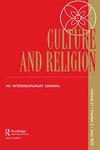The ritual incorporation and cross-cultural communication in Camau, Vietnam: a case study of the Tianhou cult
IF 0.5
0 RELIGION
引用次数: 0
Abstract
ABSTRACT Tianhou (天后) is a popular religious figure rooted in Fujian, China. Historically, she was continuously ‘standardised’ by late imperial China, making this character a standard symbol. In the late 17th century, Chinese immigrants propagated the Tianhou cult in Southern Vietnam, further developed, and made Tianhou the identity marker of their community. However, in Camau and other places of Southern Vietnam, this symbol became partially changed due to the process of localisation and cross-cultural exchange. The Chinese successfully incorporate Chinese Tianhou rituals with Vietnamese family rites (especially the worships of Kitchen God and ancestors) to gain both community consolidation and cross-ethnic integration. The illusionary incorporation effectively consolidates the ties between peoples and improves the position of the ethnic Chinese in the local society. This paper mainly applies the concept of ‘inventing tradition’ and Seligman’s and Weller’s (2012) viewpoint of the cultural interaction of notation, ritual and shared experience to generalise the nature and significance of liturgical transformation in the Tianhou cult among the ethnic Chinese in Camau. The study shows that cultural adaptation, as a means for survival and evolution, has been the goal of an endless struggle among the Chinese in contemporary Vietnam.越南卡马岛的仪式融合与跨文化交流——以天侯教为例
天侯是一个扎根于中国福建的民间宗教人物。从历史上看,她在帝制晚期的中国不断“标准化”,使这个字成为标准符号。17世纪后期,中国移民在越南南部传播了天侯崇拜,并进一步发展,使天侯成为他们社区的身份标志。然而,在卡马乌和越南南部的其他地方,由于本地化和跨文化交流的过程,这个符号部分改变了。中国人成功地将中国的天侯仪式与越南的家庭仪式(特别是对灶神和祖先的崇拜)结合起来,以获得社区巩固和跨民族融合。这种虚幻的合并有效地巩固了民族之间的联系,提高了华人在当地社会中的地位。本文主要运用“发明传统”的概念和塞利格曼和韦勒(2012)关于符号、仪式和共享经验的文化互动的观点来概括卡马华人天后崇拜中礼仪转化的性质和意义。研究表明,文化适应作为一种生存和进化的手段,一直是当代越南华人无休止斗争的目标。
本文章由计算机程序翻译,如有差异,请以英文原文为准。
求助全文
约1分钟内获得全文
求助全文

 求助内容:
求助内容: 应助结果提醒方式:
应助结果提醒方式:


